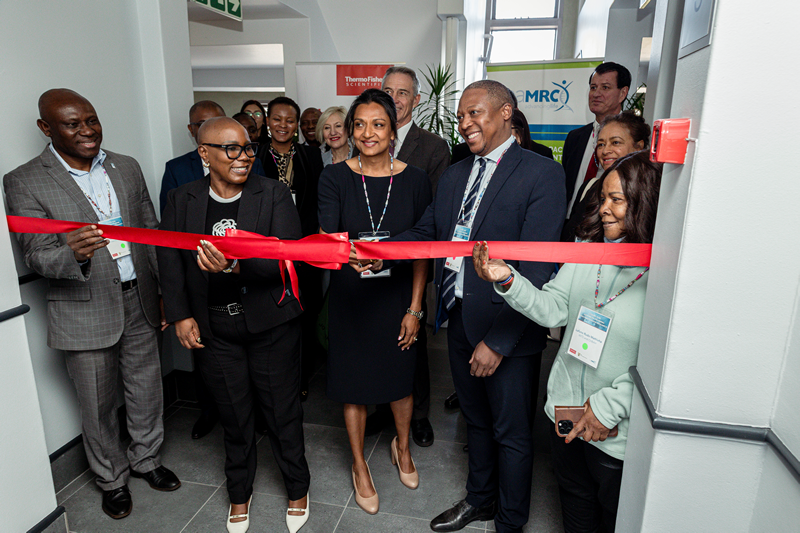New Molecular Science Hub Launched to Empower Future SA Researchers
At the official launch ceremony, Deputy Minister Gina hailed the CATIR initiative as a strategic investment in South Africa’s scientific future.

- Country:
- South Africa
South Africa marked a major milestone in its scientific development with the launch of the Centre for Advanced Training and Innovative Research (CATIR) in Pretoria. The new facility, opened with great enthusiasm by Deputy Minister of Science, Technology, and Innovation, Nomalungelo Gina, aims to address critical gaps in molecular science expertise and laboratory management across the country. CATIR is set to empower the next generation of researchers with cutting-edge training while reinforcing South Africa’s commitment to building a resilient, knowledge-based economy driven by innovation.
A Vision Realised: Innovation in Action
At the official launch ceremony, Deputy Minister Gina hailed the CATIR initiative as a strategic investment in South Africa’s scientific future. “By investing in this centre, we are investing in the future of South African science, empowering our researchers, nurturing young talent, and fostering an environment where innovation can thrive,” she stated.
The centre is the product of a three-way partnership among the Department of Science, Technology, and Innovation (DSTI), the South African Medical Research Council (SAMRC), and Thermo Fisher Scientific, a global leader in scientific research tools and diagnostics. The collaboration between government, academia, and the private sector represents a forward-looking model for public-private partnership in national development.
Strategic Goals and Capacity Building
CATIR’s primary goal is to bridge the often-noted gap between academic learning and practical, real-world application. The facility will serve as a dedicated training hub where students, researchers, and early-career scientists can develop hands-on proficiency in molecular science techniques, laboratory workflow, and scientific research management.
At full capacity, CATIR will train up to 160 students per year, with its first cohort of 20 expected to graduate before the end of 2025. Importantly, the centre is already opening doors for students from previously disadvantaged universities such as the University of Venda, University of Limpopo, and Sefako Makgatho Health Sciences University.
This initiative also resonates with the country’s Decadal Plan (2022–2032), which promotes a more inclusive and transformative National System of Innovation. As Gina noted, “This launch is especially significant as it aligns with our national strategy to build a coherent innovation system that truly serves the social and economic needs of all South Africans.”
SAMRC: The Trusted Bridge Between Policy and Implementation
The South African Medical Research Council plays a crucial role in the project’s management and execution. Professor Ntobeko Ntusi, President and CEO of SAMRC, emphasized the organization’s track record in delivering successful capacity-building initiatives, particularly in under-resourced and historically disadvantaged institutions.
“The COVID-19 pandemic made it abundantly clear that we must build local capacity in molecular diagnostics and testing to make our health systems more resilient. CATIR is a significant step forward in equipping South Africa with the expertise it needs to meet the health challenges of today and tomorrow,” Ntusi explained.
Under SAMRC’s stewardship, the CATIR is positioned to become a national centre of excellence for skills development, scientific research, and disease monitoring — crucial tools in South Africa’s broader public health response.
Thermo Fisher Scientific: Driving Innovation Through Partnership
Thermo Fisher Scientific, which brings global expertise in life sciences and diagnostics to the partnership, is playing a vital role in equipping the facility with advanced tools and technologies. Urmi Prasad Richardson, President of Thermo Fisher’s Europe, Middle East, and Africa operations, underscored the company’s commitment to the mission.
“Our collaboration with the South African government and SAMRC demonstrates how public-private partnerships can build local capacity and improve national health resilience. We are proud to contribute to a facility that enables the next generation of South African scientists to develop skills that will make a lasting impact,” she said.
Commitment to Inclusive Scientific Development
Beyond technological advancement, the establishment of CATIR symbolizes a broader commitment to inclusive scientific growth. It ensures that students from underserved communities have access to world-class training environments — an essential step in diversifying and transforming South Africa’s scientific landscape.
Gina reiterated the importance of inclusive growth in her address: “We must ensure that the scientific knowledge economy we are building benefits all South Africans, regardless of their background. CATIR is one of the tools through which we can break the barriers of the past and move towards an equitable and prosperous future.”
Looking Ahead: A National Blueprint for Innovation
The Pretoria-based facility is expected to serve as a blueprint for similar centres across the country. With strong backing from national institutions and international stakeholders, the CATIR has the potential to evolve into a regional hub for molecular sciences in Africa.
Gina concluded the launch event by calling on all sectors — public, private, academic, and civil society — to work together in harnessing the full potential of South Africa’s scientific community.
“The future of our country depends on the resilience of our systems, the quality of our education, and the strength of our partnerships. CATIR is proof that when we align around a shared vision, we can build the future we aspire to,” she said.










